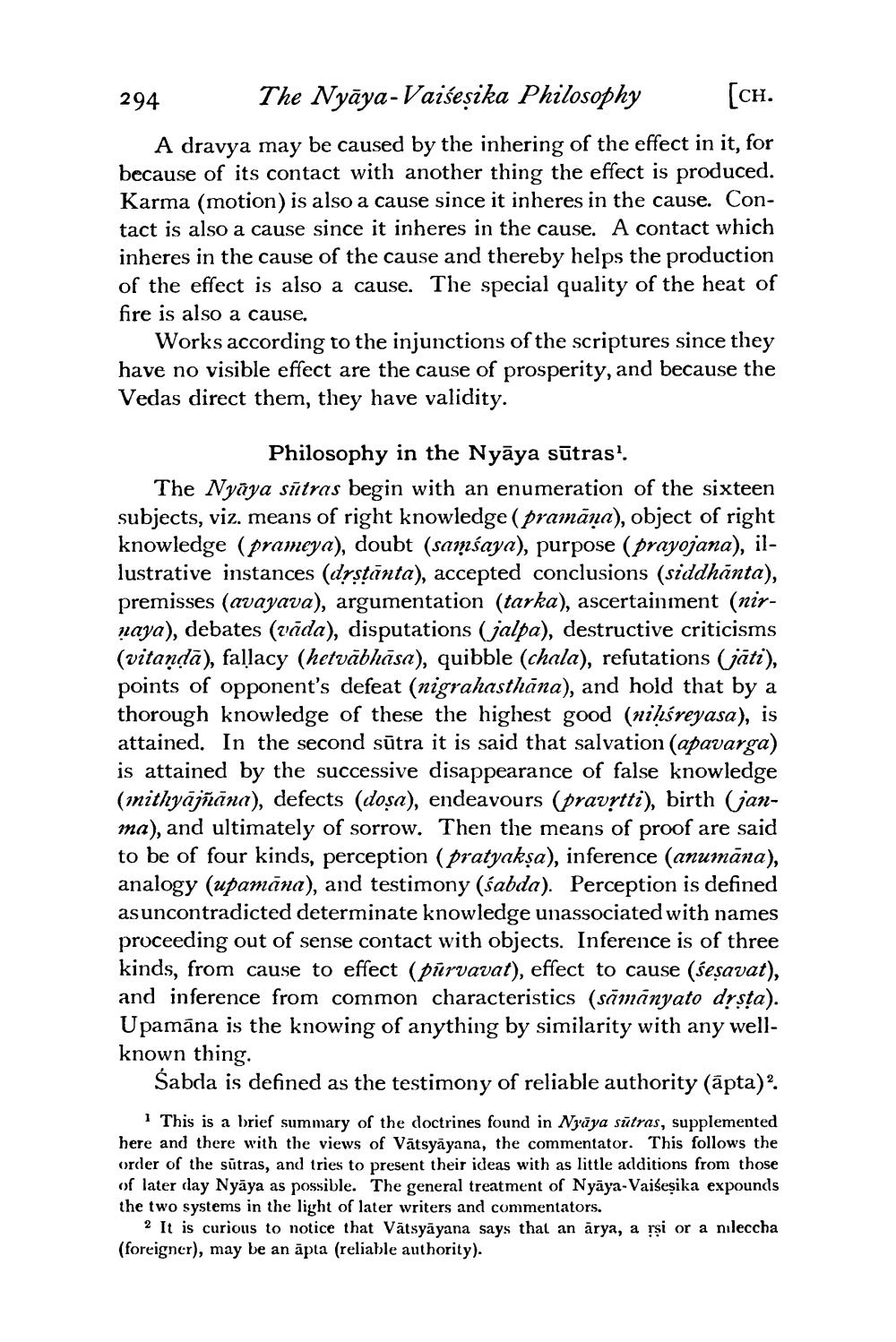________________
294 The Nyāya-Vaišeșika Philosophy [CH.
A dravya may be caused by the inhering of the effect in it, for because of its contact with another thing the effect is produced. Karma (motion) is also a cause since it inheres in the cause. Contact is also a cause since it inheres in the cause. A contact which inheres in the cause of the cause and thereby helps the production of the effect is also a cause. The special quality of the heat of fire is also a cause.
Works according to the injunctions of the scriptures since they have no visible effect are the cause of prosperity, and because the Vedas direct them, they have validity.
Philosophy in the Nyāya sūtras'. The Nyaya sūtras begin with an enumeration of the sixteen subjects, viz. means of right knowledge (pramāna), object of right knowledge (prameya), doubt (samsaya), purpose (prayojana), illustrative instances (drstānta), accepted conclusions (siddhānta), premisses (avayava), argumentation (tarka), ascertainment (nirraya), debates (vāda), disputations (jalpa), destructive criticisms (vitandā), fallacy (hetvābhāsa), quibble (chala), refutations (jāti), points of opponent's defeat (nigrahasthāna), and hold that by a thorough knowledge of these the highest good (nihśreyasa), is attained. In the second sūtra it is said that salvation (apavarga) is attained by the successive disappearance of false knowledge (inithyājñāna), defects (dosa), endeavours (pravrtti), birth (janma), and ultimately of sorrow. Then the means of proof are said to be of four kinds, perception (pratyakşa), inference (anumāna), analogy (upamāna), and testimony (sabda). Perception is defined asuncontradicted determinate knowledge unassociated with names proceeding out of sense contact with objects. Inference is of three kinds, from cause to effect (pārvavat), effect to cause (sesavat), and inference from common characteristics (sămânyato drsta). Upamāna is the knowing of anything by similarity with any wellknown thing
Sabda is defined as the testimony of reliable authority (āpta)?.
1 This is a brief summary of the doctrines found in Ngāya sūtras, supplemented here and there with the views of Vātsyāyana, the commentator. This follows the order of the sūtras, and tries to present their ideas with as little additions from those of later day Nyāya as possible. The general treatment of Nyāya-Vaiseșika expounds the two systems in the light of later writers and commentators.
2 It is curious to notice that Vätsyāyana says that an ārya, a rsi or a nileccha (foreigner), may be an āpta (reliable authority).




